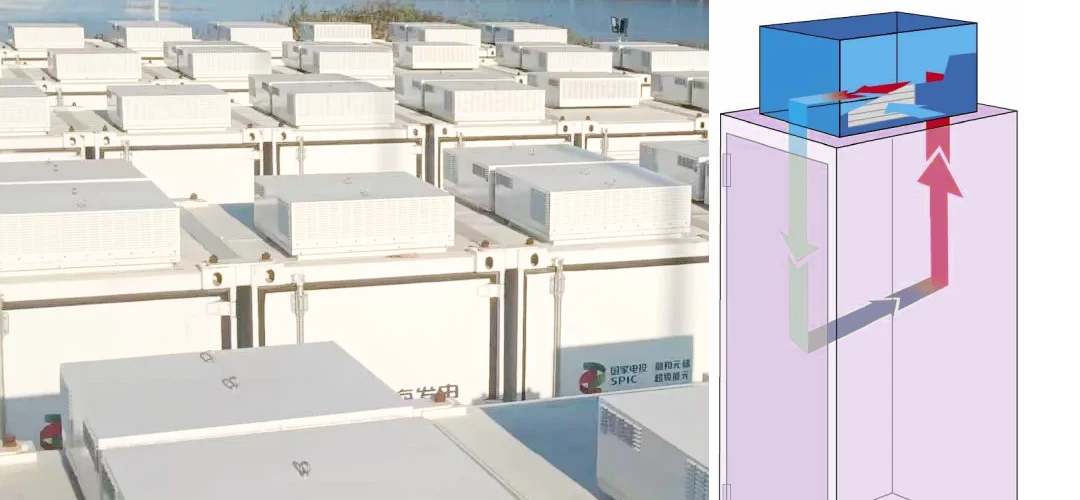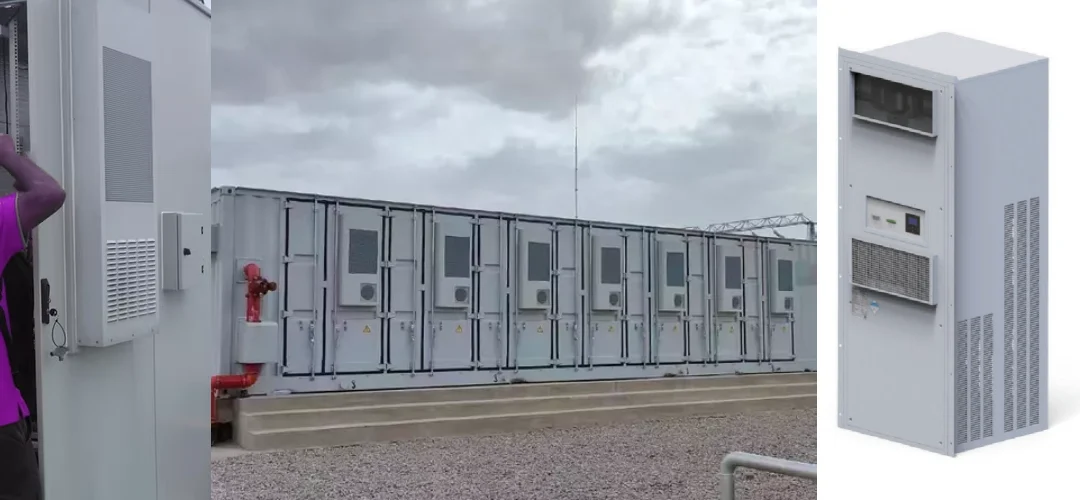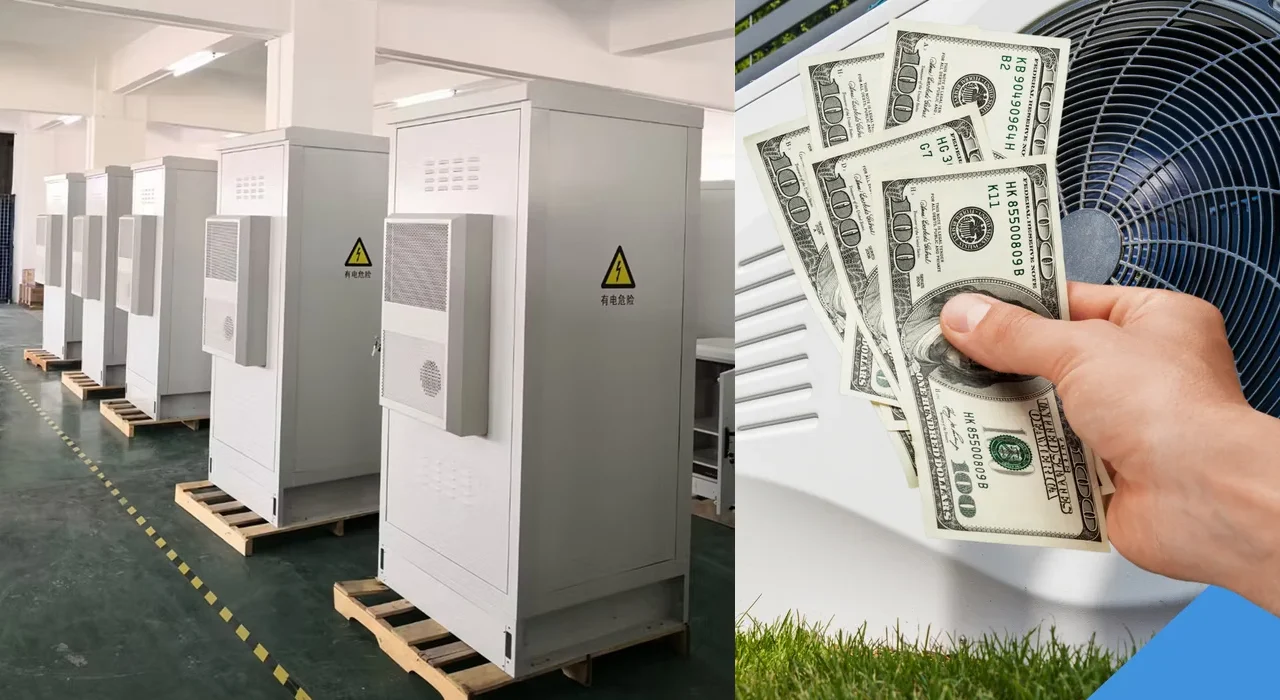When you compare ip66 vs ip67 enclosure ratings, you see the main difference comes down to water protection. Both ratings mean your outdoor enclosures keep out dust, but ip67 offers extra defense against temporary water immersion, while ip66 handles powerful water jets. Picking the right rating matters if you want to protect your equipment in harsh places. You’ll find that Linkwell offers outdoor enclosures with both options for different needs. Many sectors depend on these ratings:
- Construction, manufacturing, and marine industries often require ip67 for safety and compliance.
- Outdoor lighting, security cameras, telecom equipment, and control panels usually use ip66.
Here’s a quick look at their market share in industrial applications:
| IP Rating | Global Market Share | Key Characteristics |
|---|---|---|
| IP66 | 30% | Dust tight, handles strong water jets, widely used |
| IP67 | 20% | Handles immersion, ideal for harsh outdoor use |
Electrical Enclosure Key Takeaways
- IP66 and IP67 both protect against dust, but IP67 also protects against temporary water immersion while IP66 resists strong water jets.
- Choose IP66 for outdoor equipment exposed to heavy rain or water jets, and IP67 for flood-prone or marine environments where submersion may occur.
- Linkwell offers durable enclosures in materials like stainless steel and polycarbonate, certified to meet strict quality and safety standards.
- Consider your environment’s water risks, temperature changes, and budget when selecting between IP66 and IP67 ratings.
- Customization options from Linkwell help you get the perfect enclosure fit with added features like climate control and extra seals.
IP Ratings Overview
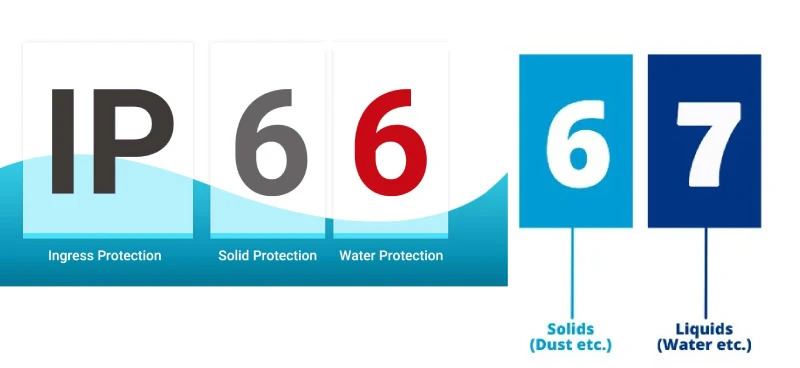
What Are IP Ratings
You might see the letters “IP” on outdoor enclosures and wonder what they mean. IP stands for ingress protection. This system tells you how well an enclosure keeps out dust and water. The International Electrotechnical Commission (IEC) created this standard, known as IEC 60529, to help everyone understand how much protection a product offers. When you look at ip enclosure ratings, you see two numbers after the letters “IP.” The first number shows how well the enclosure blocks solids like dust. The second number shows how well it keeps out water.
Here’s a quick look at how the IEC 60529 standard breaks down the digits:
| Digit Position | Meaning | Range | Description |
|---|---|---|---|
| First Digit | Protection against solid objects | 0-6 | 0 = no protection, 6 = dust-tight |
| Second Digit | Protection against liquids | 0-9 | 0 = no protection, 9 = high-pressure water jets |
You can see that higher numbers mean better protection. For example, a rating of IP66 means the enclosure is dust-tight and can handle strong water jets. IP67 means it is dust-tight and can survive being underwater for a short time.
How IP Ratings Work
You want to know how these ratings get tested. The process is pretty strict. For solids, the enclosure faces dust chambers and vacuum tests to make sure nothing gets inside. For water, the tests change based on the number. Lower numbers might use dripping or spraying water. Higher numbers use powerful jets or even submersion in water.
Here’s a simple way to remember what the numbers mean:
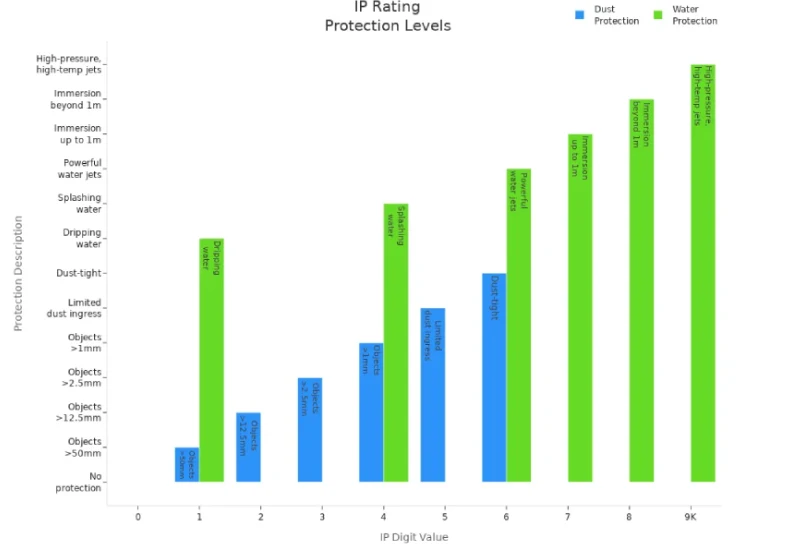
- The first digit (0-6) shows how well the enclosure keeps out dust and other solids.
- The second digit (0-9) shows how well it keeps out water, from drips to full immersion.
- Each rating uses special tests, like spraying water with a hose or dunking the enclosure in water.
- The system helps you compare products easily and pick the right one for your needs.
When you choose an enclosure, understanding ingress protection ratings helps you make a smart choice. You can match the level of protection to your environment, whether you need to keep out dust, rain, or even flooding.
IP66 vs IP67 Enclosure Ratings
When you look at ip66 vs ip67 enclosure ratings, you might wonder what really sets them apart. Both ratings give you strong protection for your equipment, but the key differences come down to how they handle water. Let’s break down the detailed comparison so you can see which one fits your needs best.
IP66
If you need an enclosure that stands up to tough environments, ip66 is a solid choice. This rating means your enclosure is fully dust tight, so no dust ingress can harm your equipment. You get complete protection against solids, which is perfect for factories, outdoor sites, or anywhere dust is a problem.
But what about water? With ip66, you get protection against powerful water jets from any direction. Imagine someone spraying your enclosure with a hose or heavy rain pounding down. The enclosure keeps everything inside safe and dry. However, ip66 does not protect against immersion. If your equipment might end up underwater, you’ll want to look at other ratings.
Here’s a quick table to show how ip66 compares to ip67 for dust and water:
| Rating | Dust Protection Level | Water Protection Level |
|---|---|---|
| IP66 | Fully dust tight | Powerful water jets, no immersion |
| IP67 | Fully dust tight | Temporary immersion up to 1 meter for 30 minutes |
You’ll find Linkwell Outdoor Enclosure products available with ip66 ratings. These enclosures use tough materials like stainless steel, aluminum, and high-grade plastics. They work well for outdoor lighting, telecom cabinets, and control panels where you expect dust and water spray but not flooding.
Tip: Choose ip66 if you need strong protection against dust and water jets, but don’t expect your equipment to be submerged.
IP67
Now, let’s talk about ip67. This rating gives you the same high level of protection against solids as ip66. Both are fully dust tight, so you never have to worry about dust ingress. The real difference comes with water protection.
With ip67, your enclosure can handle temporary immersion in water. If your equipment falls into a puddle or floodwater covers it for a short time, ip67 keeps everything safe. The rating means your enclosure can be submerged up to 1 meter deep for 30 minutes. That’s a big step up from just handling water jets.
Here’s a more detailed comparison for water protection:
| Feature | IP66 Water Protection | IP67 Water Protection |
|---|---|---|
| Water Resistance | High-pressure water jets, heavy rain | Temporary immersion up to 1 meter, 30 minutes |
| Use Case | Outdoor, factory, agriculture | Flood-prone, marine, accidental immersion |
| Cost Consideration | More affordable | Usually higher due to extra protection |
You’ll see Linkwell Outdoor Enclosure options with ip67 ratings, too. These enclosures use the same tough materials—stainless steel, aluminum, and reinforced plastics. They’re perfect for marine environments, flood-prone areas, or places where accidental submersion could happen.
Note: If you expect your equipment to face possible immersion, ip67 is the safer bet.
Quick Material Guide
Both ip66 and ip67 enclosures use strong materials to keep your equipment safe. Here’s a look at what you might find:
| Material Category | Typical Materials Used in IP66/IP67 Enclosures |
|---|---|
| Plastics | Polycarbonate, ABS, fiberglass-reinforced polyester |
| Metals | Stainless steel, aluminum, powder-coated steel |
| Composites | Fiberglass, resin |
Linkwell uses these materials to make sure your enclosure stands up to harsh conditions, whether you pick ip66 or ip67.
Summary Table: IP66 vs IP67 Enclosure Ratings
| Feature | IP66 | IP67 |
|---|---|---|
| Protection against solids | Fully dust tight | Fully dust tight |
| Protection against liquids | Powerful water jets | Temporary immersion (1m, 30 min) |
| Typical Use | Outdoor, dusty, wet (not submerged) | Flood-prone, marine, accidental submersion |
| Linkwell Availability | Yes | Yes |
When you compare ip66 vs ip67, remember that both give you top-notch dust protection. The main difference is in water protection. Linkwell Outdoor Enclosure products cover both ratings, so you can pick the right level of protection for your project.
Water Resistance Differences
IP66 Water Resistance
When you look at water resistance for ip66 enclosures, you get some of the best protection against dust and water in tough environments. You can trust ip66 to keep your equipment safe during heavy rain, hose cleaning, or even strong water jets. Here’s how the ip66 waterproof rating gets tested:
- The enclosure faces high-pressure water jets based on the IEC 60529 standard.
- Testers use a nozzle of 12.5 mm or smaller to spray water at the enclosure.
- Water jets hit the enclosure from different angles, just like real-world cleaning or storms.
- The enclosure must block all water from getting inside during these tests.
- This rating means you get a dust-tight box with strong water jets resistance, but it’s not made for submersion.
- Testers check nozzle size, water pressure, and spray angles to make sure the enclosure passes.
You can count on ip66 for protection in places with heavy rain or where you need to wash equipment with a hose. It’s the highest waterproof rating before you get into submersion protection. If you work at a construction site, run marine equipment, or manage traffic controls in wet climates, ip66 gives you reliable water resistance.
IP67 Water Resistance
Now, let’s talk about ip67. This rating takes water resistance to the next level. With ip67, you get all the dust protection of ip66, but you also get submersion protection. That means your enclosure can handle temporary water immersion—up to 1 meter deep for 30 minutes. If you expect flooding, monsoon storms, or accidental drops into water, ip67 protection keeps your equipment safe.
Check out this table to see how ip66 and ip67 stack up in heavy rain and flood conditions:
| IP Rating | Protection Description | Rainfall Tolerance | Suitable Conditions | Recommended Uses |
|---|---|---|---|---|
| IP66 | Dust-tight; protected against high-pressure water jets from any direction | Up to ~100 mm/h | Heavy rain, extreme tropical rain | Construction sites, marine equipment, traffic control in wet climates |
| IP67 | Dust-tight; protected against temporary immersion (1 m for 30 minutes) | Over 100 mm/h (includes submersion) | Torrential rain, flooding, monsoon storms | Flood-prone areas, coastal zones, storm-season deployments |
You can see that ip67 gives you water protection for situations where submersion might happen. Both ratings keep your devices running during storms, but ip67 is the clear choice for flood-prone areas.
If you need waterproof rating for outdoor gear, telecom cabinets, or energy systems, ip67 is your go-to for submersion protection. You get peace of mind knowing your equipment can survive even the harshest water exposure.
IP66 vs IP67: Use Cases
Industrial Applications
You see ip66 and ip67 enclosures in many real-world applications. Factories and industrial sites often use ip66 for equipment that faces dust and powerful water jets. You might find these enclosures protecting control panels on a busy factory floor or keeping electronics safe at a construction site. If you manage outdoor surveillance systems, like security cameras, ip66 gives you the protection you need against rain and hose cleaning.
Here are some common use case scenarios for ip66:
- Equipment in factories exposed to dust and water jets
- Construction sites with harsh conditions
- Outdoor lighting and street equipment
- Solar installations needing durable protection
- Agricultural machines facing dust and water
Linkwell Outdoor Enclosure products fit right into these environments. You get reliable protection for your gear, even when you need to wash down equipment or deal with unpredictable weather.
When you need more than just water jet resistance, ip67 steps in. You might use ip67 enclosures for gear in flood-prone areas or places where accidental immersion could happen. Think about marine equipment, pump stations, or energy systems near water. With ip67, you know your equipment stays safe, even if it ends up underwater for a short time.
Outdoor and Harsh Environments
Outdoor settings bring their own challenges. You want protection from dust, rain, and sometimes even flooding. Ip66 enclosures work well for outdoor cameras, lighting, and telecom boxes. They handle heavy rain and strong water jets, so you don’t worry about storms or cleaning.
If your outdoor equipment faces possible submersion, ip67 is the better choice. Coastal zones, floodplains, and areas with heavy storms need this level of protection. Linkwell Outdoor Enclosure solutions offer both ratings, so you can match the enclosure to your environment.
Here’s a quick table to help you choose:
| Use Case Scenarios | IP66 Protection | IP67 Protection |
|---|---|---|
| Outdoor lighting and cameras | ✅ | ✅ |
| Factory control panels | ✅ | ✅ |
| Flood-prone outdoor installations | ❌ | ✅ |
| Marine and coastal equipment | ❌ | ✅ |
| Agricultural irrigation systems | ✅ | ✅ |
Tip: Always match the enclosure rating to your specific outdoor risks. Linkwell can help you pick the right solution for your project.
Choosing the Right Rating
Environmental Factors
When you start choosing the right ip rating for your enclosure, you need to look closely at your environment. Temperature swings, humidity, and exposure to water all play a big role in how well your enclosure protects your equipment.
- Big temperature changes can cause condensation inside your enclosure. If the air inside gets humid and then cools down quickly, water droplets can form on your electronics.
- Even though both IP66 and IP67 enclosures keep out dust and water from the outside, neither one stops condensation from forming inside if moisture sneaks in.
- Sunlight can heat up your enclosure fast. If a cold rain hits right after, the sudden drop in temperature can create negative pressure. Sometimes, this pressure pulls water inside, even through tight seals.
- Humid air touching cold surfaces inside the box can lead to moisture problems, just like you see on windows in winter.
You can fight these issues with a few smart moves:
- Add desiccants to soak up extra moisture.
- Use small heaters inside the enclosure to keep things warm and dry.
- Put insulation inside to stop big temperature swings.
- Install breathable vents that let air out but keep water from getting in.
- Make sure your gasket seals are smooth and tight.
- Watch the humidity and temperature inside. You can set up heaters to turn on only when needed.
- Try to keep your enclosure out of direct sunlight to avoid thermal shock.
- Use pressure relief stoppers or condensate discharge systems if you expect lots of moisture.
Tip: If you’re not sure which features you need, Linkwell can help you customize your Outdoor Enclosure for your exact environment.
Cost Considerations
Cost always matters when you’re making an informed decision about protection. The price difference between IP66 and IP67 enclosures comes down to the level of sealing and the extra testing needed for submersion.
Here’s a quick table to help you compare:
| Feature | IP66 Rating | IP67 Rating |
|---|---|---|
| Dust Protection | Fully dust-tight | Fully dust-tight |
| Water Protection | Resistant to powerful water jets | Can withstand temporary water submersion |
| Typical Use Cases | Industrial machines, warehouses | Outdoor, marine, and rugged environments |
| Durability Level | High, suitable for harsh settings | Extreme, suitable for wet or submerged areas |
| Cost Implications | Moderate cost, balanced protection | Higher cost due to maximum sealing and durability |
Getting an IP67 certification for your enclosure can cost anywhere from $500 to $2000, depending on the size and complexity of your product. Bigger enclosures and more complicated designs usually mean higher costs. If your site only faces rain or water jets, IP66 might save you money while still giving you strong protection. If you expect flooding or submersion, the extra investment in IP67 is worth it.
Note: Linkwell offers both IP66 and IP67 Outdoor Enclosures, so you can balance your budget and your protection needs.
Industry Standards
Industry standards help you figure out which enclosure rating fits your sector. These standards make sure your equipment stays safe and meets legal or customer requirements.
- IP66 enclosures work well in outdoor and industrial places where you need to block dust and high-pressure water jets. You’ll see them in industrial wash-down areas, outdoor electrical boxes, and on farms.
- IP67 enclosures are the top pick for spots where your equipment might get submerged, like marine docks, outdoor junction boxes, or flood-prone sites.
- The right choice depends on your environment and how much water resistance you need. Industry standards guide you to the right rating for your job.
Here’s a handy table that compares IP and NEMA standards:
| IP Rating | NEMA Equivalent | Dust Protection | Water Protection |
|---|---|---|---|
| IP65 | NEMA 3/3R | Dust-tight | Low-pressure jets |
| IP66 | NEMA 4 | Dust-tight | High-pressure jets |
| IP67 | NEMA 4X | Dust-tight | Temporary submersion |
You’ll find that sectors like telecommunications, solar energy, marine, and agriculture all follow these standards when choosing the right ip rating. If you need help matching your enclosure to your industry’s standards, Linkwell’s team can walk you through the options and even create a custom solution for you.
Callout: Choosing the right ip rating isn’t just about picking a number. You want to match your enclosure to your environment, your budget, and your industry’s standards. If you need a custom fit, Linkwell can help you design the perfect Outdoor Enclosure for your project.
Linkwell Outdoor Enclosure Advantages
Certifications and Quality
When you choose Linkwell outdoor enclosures, you get more than just a box. You get peace of mind. Linkwell puts every enclosure through strict quality checks. The company follows international standards like IEC 60529 and UL 60529. These standards make sure your outdoor equipment gets the right level of protection.
You might wonder how you can trust these ratings. Linkwell works with independent labs such as UL for third-party certification. This means experts test the enclosures for dust and water resistance. They check if the outdoor enclosures really meet IP66 or IP67 standards. Many industrial buyers look for this kind of certification because it proves the product is reliable. You can count on Linkwell to deliver enclosures that stand up to tough environments and keep your equipment safe.
Tip: Always look for third-party certifications like UL when you want the best protection for your outdoor projects.
Customization Options
Every outdoor project is different. Linkwell knows you need options. You can pick from stainless steel, fiberglass, or polycarbonate enclosures. Want extra weatherproofing? Add special gaskets, seals, or coatings. Need more security? Choose keyed or electronic locks, tamper-proof screws, or hidden hinges.
You can also add climate control features. These include cabinet air conditioners, heaters, fans, and thermostats. If you need a special size, cable cutouts, or mounting method, Linkwell can make it happen. The team even helps with vents, cable glands, and custom packing.
Here’s a quick look at how customization affects performance and cost:
| Customization Aspect | Performance Impact | Cost Impact |
|---|---|---|
| Premium materials | Better corrosion resistance and durability | Higher cost |
| Custom sizes | Perfect fit for your equipment | Increased cost |
| Extra features | May need special sealing to keep protection | Adds to cost |
Customization lets you match your outdoor enclosure to your exact needs. You get better protection and longer life for your equipment. The Linkwell team offers expert advice and fast support, so you always get the right solution for your outdoor environment.
Choosing between IP66 and IP67 comes down to understanding your outdoor environment and water risks. Check out this quick comparison:
| Feature | IP66 Water Resistance | IP67 Water Resistance |
|---|---|---|
| Water Protection | Resists high-pressure water jets | Withstands temporary submersion up to 1 meter for 30 minutes |
| Use Case Suitability | Ideal for heavy rain, hose-downs, washdowns | Best for flood-prone areas, marine environments, standing water |
When you match enclosure ratings to your operational needs, you boost safety, reduce downtime, and keep your outdoor equipment running longer. Linkwell Outdoor Enclosures deliver certified protection and customizable options. If you want the best fit for your project, reach out to experts for advice.
FAQ
What does “IP66” or “IP67” mean for my outdoor enclosure?
You see “IP66” or “IP67” on enclosures. These ratings show how well your box keeps out dust and water. IP66 handles strong water jets. IP67 protects against temporary immersion. Both keep your equipment safe in tough places.
Can I use an IP66 enclosure in a flood-prone area?
You shouldn’t use IP66 enclosures where flooding happens. IP66 keeps out rain and water jets, but not standing water. For flood-prone spots, pick IP67. It protects your gear if water covers the box for a short time.
How do I know which Linkwell enclosure fits my project?
You can match your enclosure to your environment. If you expect rain or cleaning, go with IP66. If you worry about flooding or submersion, choose IP67. Linkwell’s team can help you pick the best option for your needs.
Do Linkwell enclosures come with certifications?
Yes! Linkwell outdoor enclosures have UL, CE, and NEMA certifications. You get tested and trusted protection for your equipment. These certifications mean your enclosure meets strict safety and quality standards.

